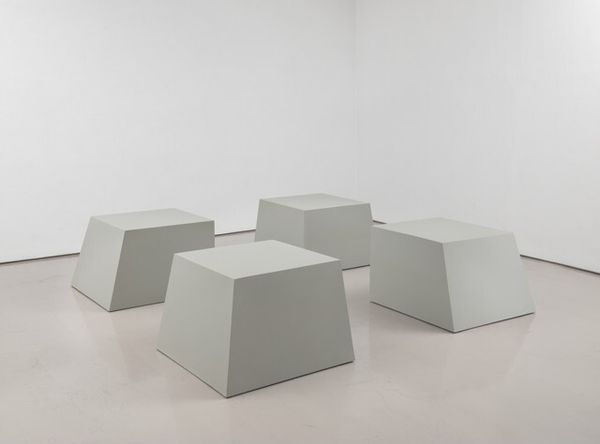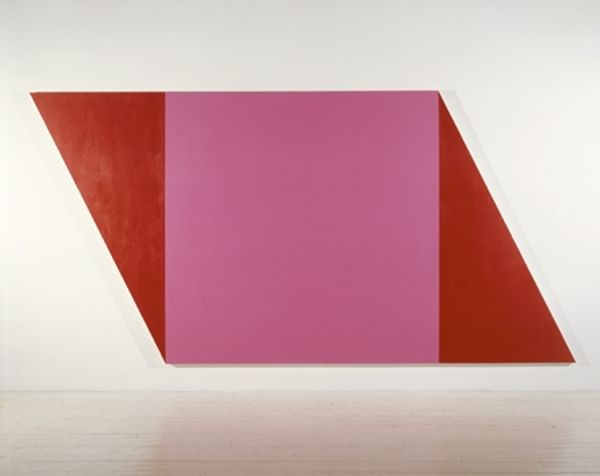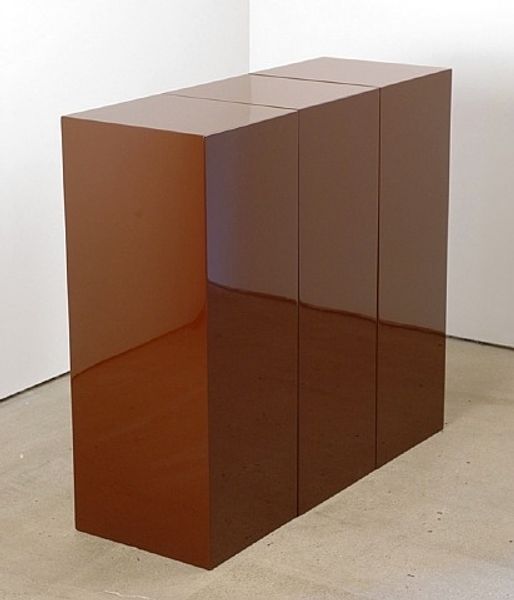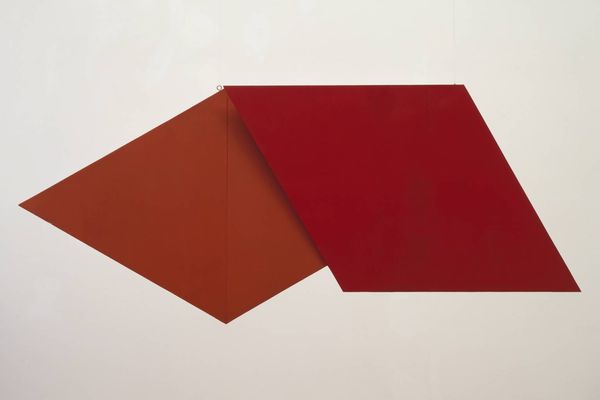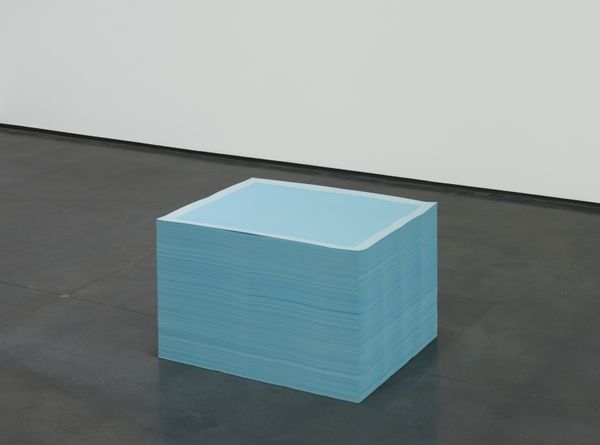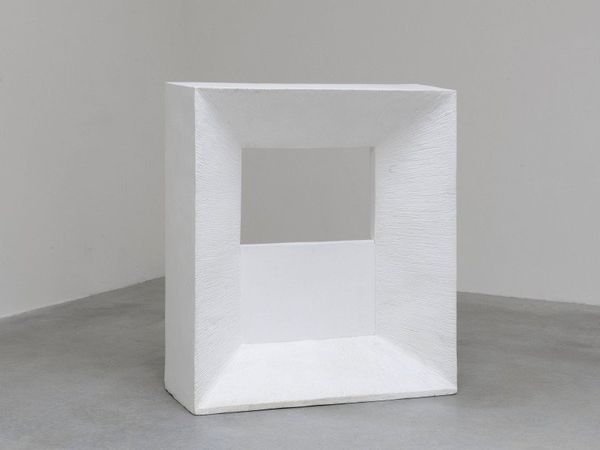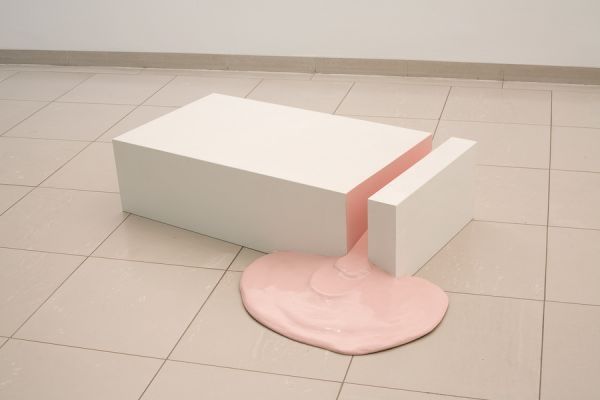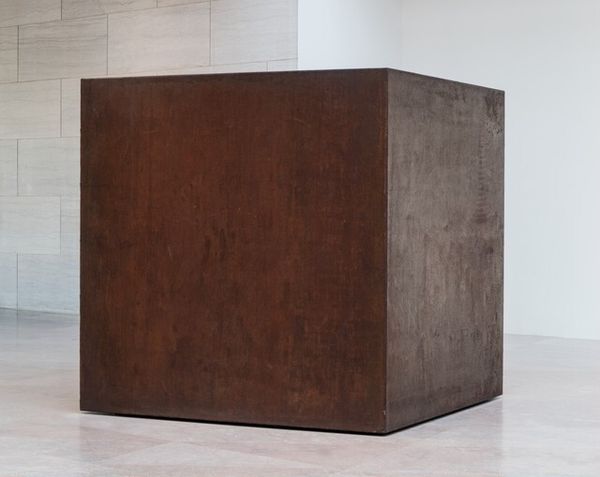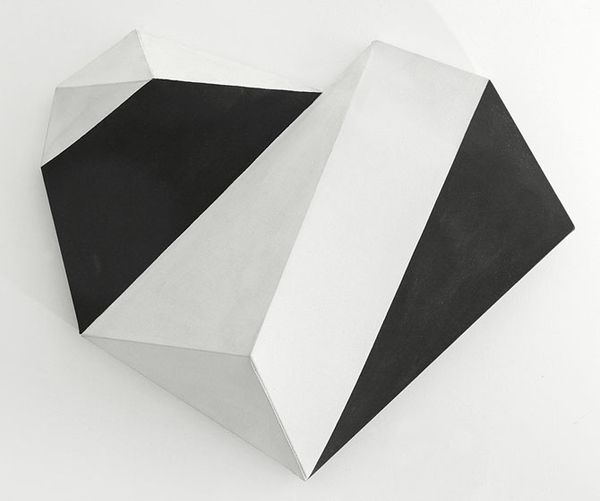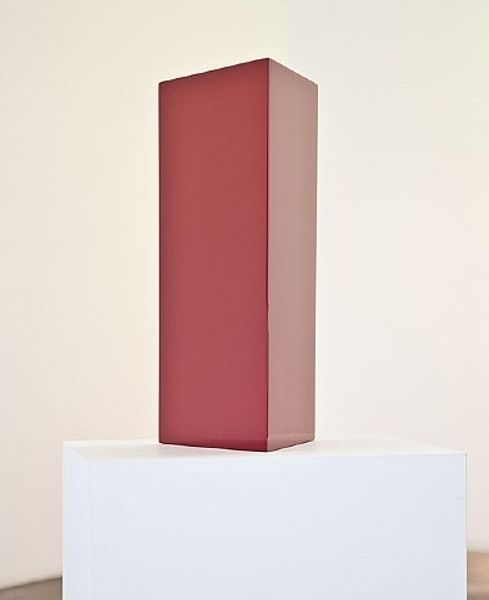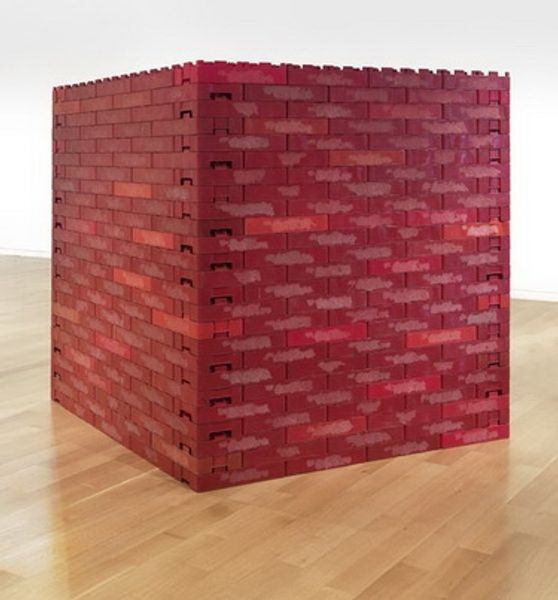
mixed-media, ink
#
abstract-expressionism
#
table
#
mixed-media
#
geometric pattern
#
ink
#
pink
#
geometric
#
pop-art
Copyright: Richard Artschwager,Fair Use
Curator: Richard Artschwager's "Table with Pink Tablecloth," created in 1964, immediately strikes me as an exercise in minimalist geometry. It appears deceivingly simple. Editor: My first thought is the uncanny feeling it evokes. It’s both familiar and foreign, a bizarre hybrid object frozen between functionality and a deliberate flatness that throws its realness into question. Curator: Yes! Let’s delve into that flatness. Artschwager's employment of mixed media, including ink, results in this precise, almost unsettling rendering of everyday domesticity. The crisp lines, the stark contrast, push it towards an almost diagrammatic representation. The "tablecloth," as it were, defies our expectations of texture. Editor: This table almost parodies consumerist notions of postwar domestic bliss. Think of the aspirational symbolism ingrained in a perfectly set table, a symbol often leveraged to perpetuate gendered expectations. Yet here, the expected warmth is entirely subverted, the familiar image recontextualized. I almost see a critical comment on ideal home aesthetics and those forced family interactions around it. Curator: Perhaps. I find the emphasis lies more squarely on formal invention. The table ceases to be merely a table; instead, it functions as an exploration of planar relationships, void and solid space. Consider the brown trapezoids beneath the pink surface. Editor: But aren't those spatial relationships, the disjunction and almost violent angles where color meets color, a reflection of societal unease at the time? This was made during the height of the Civil Rights movement. While not overtly political, such aesthetic rupture, in my opinion, reflects the disruptions taking place across social, cultural, and racial planes. Curator: An interesting perspective. I acknowledge its position within a particular cultural moment. However, the artist's engagement with perception, rather than pure representation, makes it a rich object for semiotic play, almost existing like a symbol of the idea of a table more than a literal furnishing object. Editor: Perhaps that is precisely where our interpretations converge. It seems Artschwager created something far more impactful than simply a design statement; he manifested a physical paradox capable of inspiring commentary from design to sociopolitics, making its endurance justifiable decades later. Curator: Indeed. Whether read formally or within a contextual lens, this remains a pivotal contribution to the blurring of art and everyday life.
Comments
No comments
Be the first to comment and join the conversation on the ultimate creative platform.

